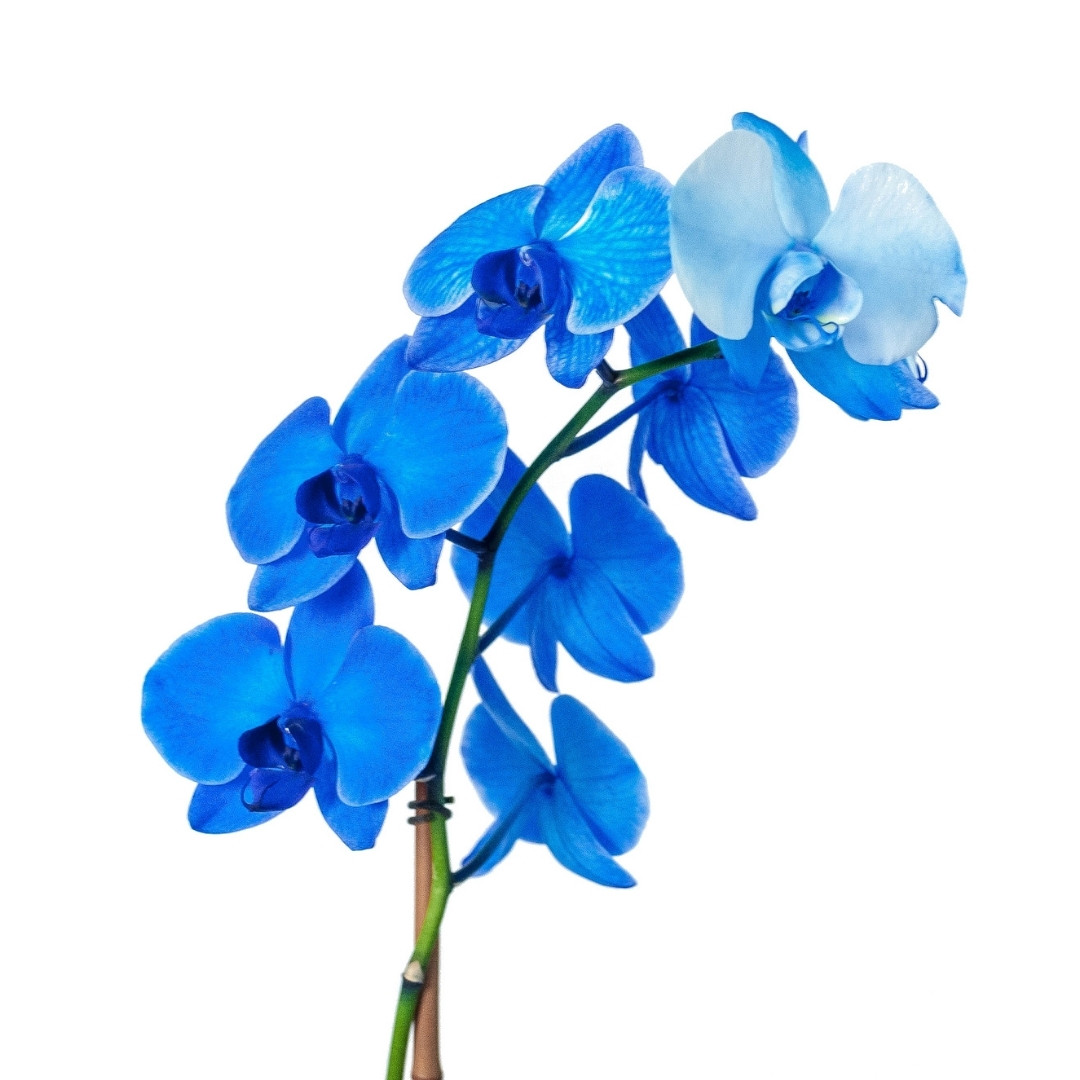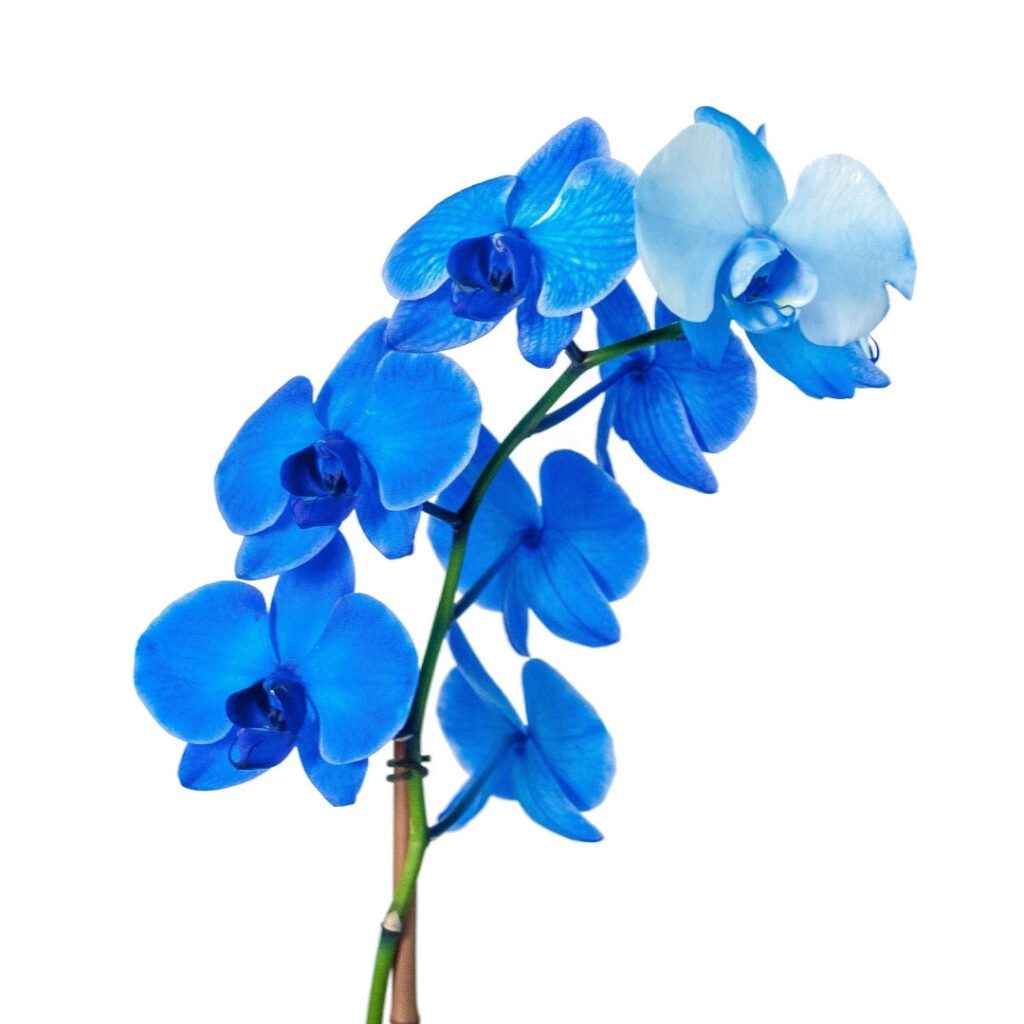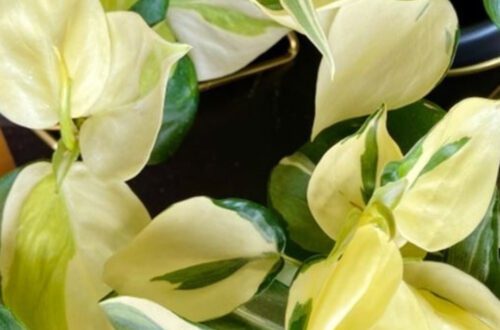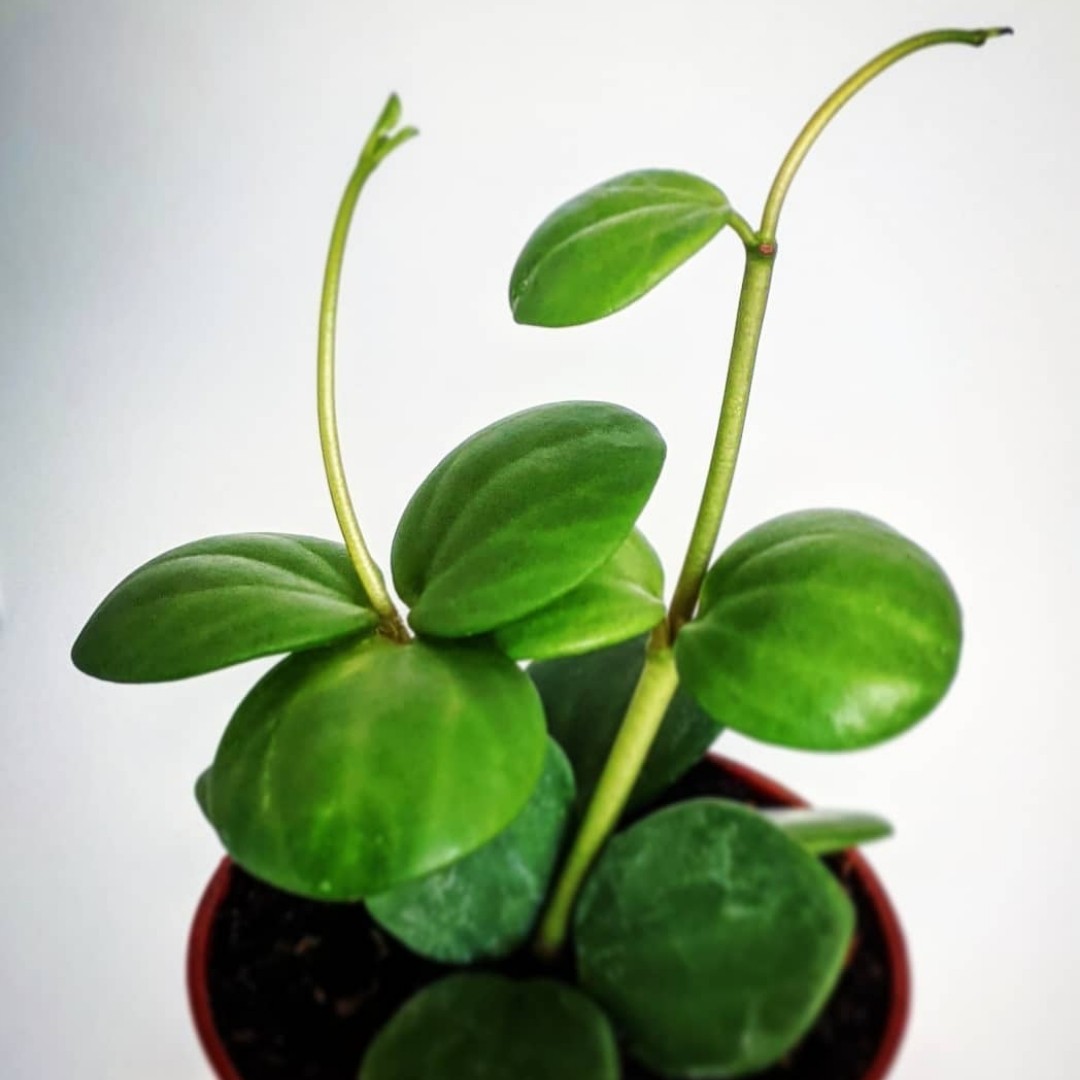
Blue Orchids
Welcome to our care guide to the Blue Orchids…
Blue Orchids Care Summary
| Light needs: | Bright indirect sunlight. No direct. |
| Watering needs: | Check every week in winter and twice weekly in warmer months. Water them only when the top 50% of the medium is dry. |
| Fertilizer: | Use a well diluted balanced feed once a week. |
| Soil: | Orchid bark mix. |
| Humidity: | 50-70%. |
| Temperature: | 15-30°C (59-86°F). |
| Where to buy: | Try our list of Rare Plant Shops. |
| Other names: | Vanda Coerulea. |
| Common issues: | Overwatering and root rot. |
Introduction
Blue orchids are stunning, eye catching plants that attract attention due to their bright blue blooms. Be careful though as some have die injected into them when sold, and will re-bloom white flowers.
See also: Philodendron Pink Princess Care, Monstera Dubia, Cebu Blue Pothos.
Blue Orchids Light Needs
Medium to bright indirect light. No direct sun though.
Tip: put it in an East facing window so it isn’t in direct hot sunlight, but so t hat it gets plenty of indirect sunlight.
How Often to Water
Orchids are epiphytes, they grow on trees in the wild, not in soil. So you have to be careful and not let them sit in heavy wet soil. Check them every week in the winter and twice a week in the warmer months. Water them only when the top 50% of the medium is dry.
Fertilizer
Use a well diluted balanced feed once a week to encourage growth.
Blue Orchids Soil
The best thing to do is give them a specialist dedicated orchid bark mix. This will mimic their natural habitat as best you can. Do not use normal potting compost for an orchid as it will very likely lead to root rot.
When To Repot
Repot it once it has died back after blooming. They will be fine in the same size pot a lot of the time, but it is a good idea to give it a fresh new potting medium.
Humidity
Aim for 50-70% humidity for a blue orchid. You can up the humidity with a wet pebble tray.
Temperature
15-30°C (59-86°F) is a good range to aim for.
How To Propagate Blue Orchids
You can propagate them using stem cuttings, you want a part of the stem with 2 nodes. Then put it in a take out tub of moist sphagnum moss, so hat the nodes are touching the moss. Put a few holes in the lid and then put the lid on, so that humidity will be high, but air can also move to avoid rot. Keep it in bright indirect sunlight. When it roots you can move it to an orchid bark mix.
Is It Toxic To Cats?
They are not toxic to cats.
Do Blue Orchids Stay Blue?
They will stay blue as long as the original leaves are alive. When they fall off the blue will be gone. New leaves will be white.
Do Blue Orchids Grow Naturally?
They are not natural, they are dyed blue.
How Are Blue Orchids Made?
They are white orchids that have been injected with a dye when the flowers are young. Then sold blue. The flowers will grow white in future when you get new flowers.
Where To Buy
Try our list of Rare Plant Shops.
Other Names
Vanda Coerulea.
Blue Orchids FAQs and Common Problems
Common problems are overwatering, so make sure you have a proper orchid mix that will let the roots drain off, and only water it when mostly dry.
Depending on where you live, tap water can cause yellowing leaves, so make sure you use filtered water.
Other Articles You Might Like
Hope you found this guide useful, you might also like our other articles: Philodendron Pink Princess Care, Philodendron White Knight. Scindapsus Treubii Moonlight, Jessenia Pothos, Hoya Linearis, Philodendron Camposportoanum Care.
Please follow us on Instagram and Pinterest for regular plant updates and occasional plant giveaways.





